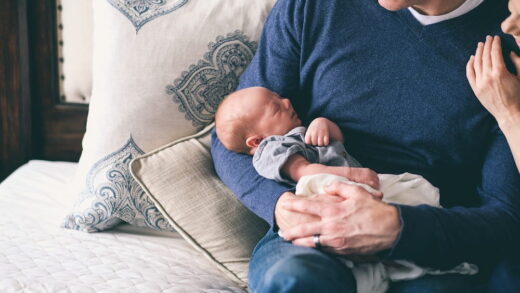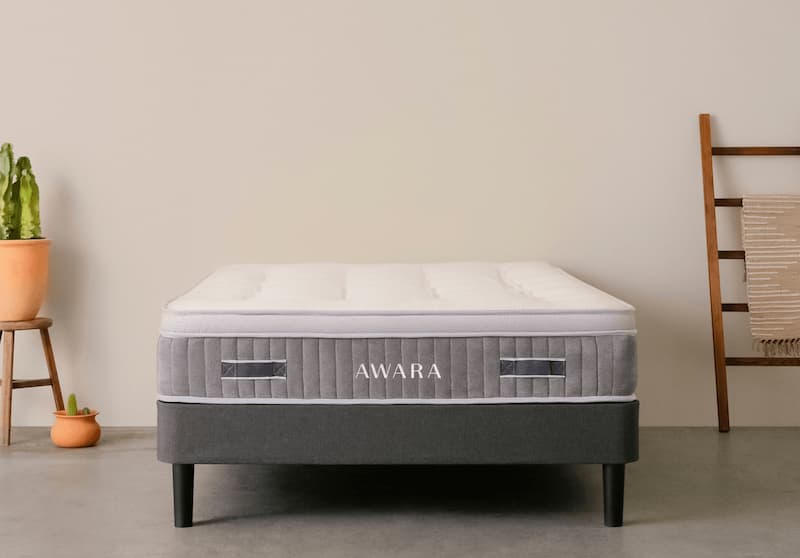How to Get Rid of Fleas in Bed? Follow the Tips

You’ll have a serious issue if you don’t know how to get rid of fleas in bed. They could ruin your life and disturb your routine.
You are supposed to wash with hot water, dry your bed, use essential oil, apply vinegar, and bath your pet…Keep reading.
Table of Contents
How to Get Rid of Fleas in Bed?
Here are the quick ways:
Wash With Hot Water
Washing your bedding in hot water is a reliable method of eradicating fleas. Washing the objects in hot water should eliminate the fleas and their eggs.
It’s crucial to wash each item separately and with a lot of hot water. To get rid of any bacteria that may have remained on the bed, you can also add a significant amount of antibacterial soap to the wash water. In order to ensure that it is fully dry, leave it in the sun last.

Dry Your Bed
Letting your bed air dry in the sun is one way to get rid of fleas. You can eliminate any fleas that may still be hiding in your bed by leaving the sheets, pillows, comforters, blankets, or any other bedtime linens out in the sun.
Fleas typically hide in the cracks and crevices of your mattress, so letting it air dry in the sun will help get rid of those bothersome fleas. The heat from the sun will also aid in getting rid of the eggs and larvae from your bedding.
Don’t forget to swing your linens in the wind while drying them outside. This way you’ll ensure that no fleas will escape from getting squished
To get rid of fleas, it’s crucial to regularly dry your bed. Regularly drying your bedding will prevent fleas from breeding there.
Use Essential Oil
The best way to safely eliminate fleas in bed is with essential oils. This is because essential oils are very concentrated, and you can easily make them work wonders.
By emitting a scent that is unpleasant to fleas, all you need to do is spray the oil on the bed and the floor, and it will keep the fleas away from those areas. you can easily spray essential oils such as peppermint oil on your sheets and pillows to keep the fleas away. Remember to place it on the pillows as well.

Apply Vinegar
The best product to get rid of fleas from your bed is vinegar. Because of the pH levels, there won’t be any skin irritations because it’s very natural. Spray your bed with a solution of equal parts vinegar and water.
Because of its acidic nature, vinegar is advantageous for killing fleas. Every two weeks, I advise doing this. This will not only solve your issue, but it will also temporarily make your bed smell nice.
Bath Your Pet
If your pets have fleas, this is another way that they might enter your house.
Because you wash your pets frequently, you might believe that they are flea-free, but since fleas are tiny, they can hide in the fur’s folds.
If a person’s bed is nearby, pet fleas often move in. So, regular cleaning and pet bathing are also essential for effectively getting rid of fleas. The flea may also occasionally be transmitted by your pet. In this situation, you must take them to the vet to receive treatment.
Hot Steam
To get rid of fleas in bed, use hot steam. They will be completely eliminated by the heat. Hot steam is very efficient at getting rid of fleas, eggs, and larvae.
Turn on high heat and fill an electric kettle with water to do this. Next, connect a small hose with a small end nozzle to the kettle’s opening and direct it toward the mattress. Direct a strong stream of hot steam right into the mattress’ seams. Make sure to thoroughly clean the mattress on both sides and underneath.
Camphor Water
Most people don’t know that camphor is an effective pesticide. It is possible to use camphor water as a natural pesticide. Spray the resulting concoction onto your bed after combining 30 ml of camphor powder with 1 liter of water. Make sure that the room has enough ventilation or isn’t closed entirely. For maximum impact, you can also spray underneath your bed.
Silica Gel
Products are frequently preserved using silica gel. It is the best material for drying things out, similar to how it kills fleas.
All you need to do to effectively eliminate your flea problem is sprinkle silica all over your mattresses and living spaces. This method is effective because the bed bugs will stick to the gel, making them unable to hold on to surfaces, which will cause them to die in a short amount of time.

Signs of Fleas in Your Bed
Thousands of flea species exist. Dog (Ctenocephalides canis) and cat (Ctenocephalides felis) fleas are the most prevalent species in the United States. Both varieties will bite cats, dogs, rabbits, and other furry mammals. They might also nip at birds if given the chance.
Fleas can bite humans as well, though they won’t remain on you for very long. Fleas favor nesting in feathers or fur over skin or hair.
On a blood host, fleas prefer to live. Although they won’t stay in your bed, they will leave behind signs of their presence.
If your pet has fleas, the eggs may roll off their fur and onto your bed, where they’ll hatch. Adult fleas have a long jump range and can land on bedding.
Signs of fleas in your bed include:
Bites
You might have a flea infestation if you see red, itchy dots on your feet, ankles, and shins.
On your lower limbs, multiple flea bites frequently appear as a straight line. A red halo may occasionally surround the center of a flea bite.
Unlike bed bugs — which typically bite people on the face, arms, and neck — fleas tend to nibble on your lower body parts. They might bite where your skin is warm and moist, behind your knees.
If your pet likes to sleep near your head, you may see bites in your elbow bends and on your upper body as well. Fleas may also be visible as red dots on your face or chest.
If you’re allergic to fleas or react badly to their bites, you might experience additional side effects. Symptoms include:
- hives
- swelling
- rash
- intense, extreme itching
- signs of anaphylaxis, including shortness of breath
Residue (Flea Dirt)
Fleas are one type of insect that excrete. Flea residue or dirt appears as tiny black dots. You may notice or feel flea dirt on your sheets if your pet has fleas and sleeps next to you.
The host’s blood is the main component of flea dirt. Fleas that have a host nearby ingest far more blood than they require each day to survive. Fleas frequently excrete while biting and can release ten or more flea dirt drops while they feed.

Pet Scratching
It can be challenging to spot flea bites on your pet, so you might want to keep an eye out for any scratching. Additionally, your pet might appear to gnaw on or bite their own skin.
An animal’s whole body can become infested with fleas. Itches and discomfort are felt all over as a result. If left untreated, your pet may develop skin infections or a rash from constantly breaking their skin while scratching.
Even if your pet is confined to the house and never ventures outside, they can still acquire fleas. On the bottoms of shoes or on clothing, fleas can enter homes. Your pet may have a flea infestation if they are scratching.
How Do Fleas Get in the Bed?
Infested beds and bedding belonging to a homeowner are uncommon. If a pet is allowed to sleep in the same bed as the owner, fleas that are found in beds and bedding are probably just looking for a blood meal or were possibly dislodged from the animal.
However, if the homeowner does not wash and change the bedding for a long while, it is possible that the immature stages of the fleas could possibly take up residence in a bed or bedding.
The more likely situation is that flea eggs, larvae and pupae are living under the bed or, even more likely, are living in the bed and bedding of the household pet(s).
Read about
What Do Fleas and Eggs Look Like?
Fleas don’t live long lives, but they do go through several stages of development:
- Following each meal, female fleas can lay up to eight eggs. Oval eggs can roll around because they are slack. Any surface, even your bed, may be where they land. There they can stay for up to 12 days, until they hatch. Flea eggs are transparent to white in color and resemble salt crystals or flakes of dandruff.
- Flea eggs grow into larvae. Small, transparent worms or maggots are how flea larvae appear. Under a microscope in particular, you might be able to see black matter inside of their bodies. For about a week, this phase lasts.
- Flea larvae develop a cocoon to become pupae that are laying eggs. Because of how sticky their cocoons are, dust can get caught on them. Flea pupae resemble flea dirt quite a bit. Pupae can remain alive and ready to hatch for up to 1 year under warm, humid conditions.
- Adult fleas.Although fleas are tiny, they are not microscopic. You might find them in your carpets or bedding if your house is infested. Fleas are wingless. They range from light reddish-brown to black in color. Their bodies are tough and can be hard to squish. Fleas can jump up to 13 inches and move very quickly. You might catch a glimpse of them hopping around on your pet’s skin, but you won’t likely catch a glimpse of them tucked beneath fur. On the belly of your pet, they are the easiest to see.
Knowing How to Get Rid of Fleas in Bed
If you have fleas in bed, removing them is a multi-step process. It is advised to treat the pet for fleas, wash bedding in hot water, vacuum any suspected flea-infested areas, and use an insect growth regulator. The Philadelphia Department of Public Health suggests combining these methods to properly rid your bed and home from fleas.
“After the animal has received care, attention should turn to the indoor space. Particular care should be taken in the areas of the house where the pet sleeps or spends the majority of its time. Throw away or wash in hot, soapy water any blankets or rugs that could be used as pet bedding. All carpeted areas and upholstered furniture should be thoroughly vacuumed and the sweeper bag contents discarded. If the flea infestation is mild, regular, thorough vacuuming might help to get rid of it. Moderate to heavy infestations, however, will usually necessitate the application of a residual insecticide to carpets, baseboards, cracks and crevices, and other areas where fleas may be present.”
If you have any questions, please leave a comment. Thank you for reading.


















![Nectar Premier Copper Mattress Review In 2022 [Updated]](https://www.myspacebeds.com/wp-content/uploads/2022/09/Nectar-Premier-Copper-Mattress-Review-In-2022-Updated.jpg)


